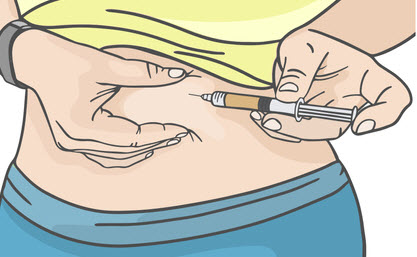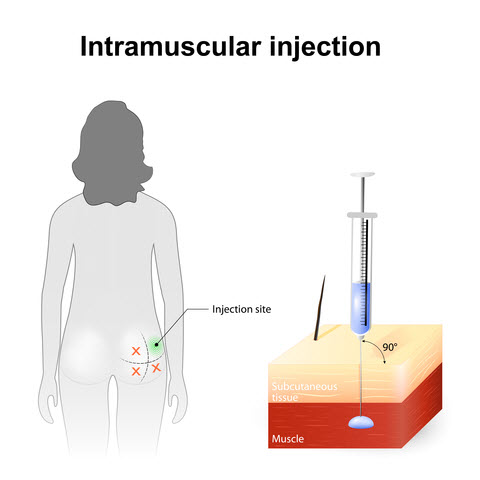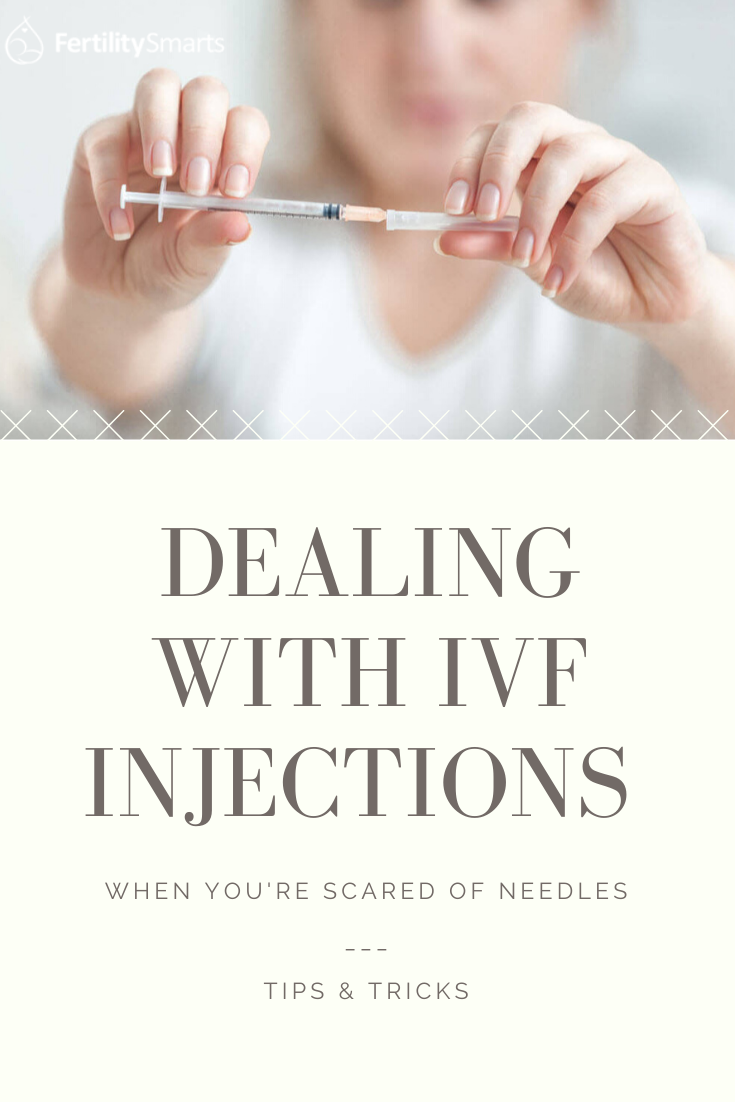Anyone who has previously gone through in vitro fertilization (IVF) knows that if you once had a fear of needles, you won't anymore. Because the truth is, when it comes to infertility treatments, we often don’t have any other choice.
Since I’ve done plenty of shots over the years, I’m here to tell you that yes, you can do it, and yes, you will also survive them. Dare I even say they become no big deal after a while?
Get Educated
Before any of the actual shot giving can occur, your clinic will need to know you are OK with giving them, and if not, who will be administering them. This usually happens at a nurse consult appointment, typically following a consultation with your doctor when IVF is given the go-ahead. You or you and your partner will meet with the nurse to go over your medications, and you’ll get a crash course in injections.
Get Organized
After you’ve received the IVF medications and supplies from the pharmacy, you’ll administer them according to your doctor’s orders. Most women have to do several shots a day, at specific times, and it’s necessary to keep a calendar of it all. Most clinics provide a calendar in their information paperwork, but if it doesn't work for you or you prefer digital, make your own.
Related:
What to Expect When You're Injecting
Here is what you can expect when dealing with IVF injections, the different places you may be giving them, as well as tips for—you know—actually going through with it.
Types of Injections
With fertility medications, there are typically two different types of injections that are required:
Subcutaneous Injections (SC)
Subcutaneous injections go right under the skin before you reach the muscle. Usually, the best injection site for these is right in your abdomen or “love handles.” Other places can be the fatty part on the back of your arm or your thigh, but depending on the type of medication, these places could be more painful.

The syringes are small because the maximum dose of a medication is only one milliliter. These needles are tiny, and you may not even feel them go in. They have a gauge of 19-27 (the smaller the number, the smaller the needle's width).
When you’re going to inject yourself with an SC shot, it can help to pinch up the skin if there isn’t a lot of fat in the area or inject it at a 45-degree angle. Likewise, if there is plenty of padding, you can spread your skin with your fingers or inject it at a 90-degree angle.
The most common medications you would give this route are the stimulation medications to grow your follicles and your hCG trigger shot right before your egg retrieval. This might include :
- Menopur
- Lupron
- Gonal-F
- Follistim
- Bravelle

Intramuscular Injections (IM)
Intramuscular injections are just as they sound: they are the injections that go right into your muscle, and understandably, these are bigger in all aspects. Most of the time, intramuscular injections go into a muscle called the dorsogluteal, and it’s located almost on your buttocks. By dividing the buttock into four quadrants, this area is located in the upper-outer quadrant.
Another place you could inject is the area on your thigh, but since the dorsogluteal area has more fat, it’s the best site for lessening the pain. These syringes usually are for two to three milliliters of medication, and the most common IM medication is progesterone. I hate to say it, but these needles are one to two inches in length and a lot wider than the subcutaneous ones with gauges of 26-30.

Tips on Giving Yourself IVF Injections
If you’ve made it this far, I have good news. There are things you can do to make the experience of injecting yourself easier.
And yes, it is fair to expect some discomfort. You can expect to have some pain and bruising at the injection site. Considering the number of shots you will likely be required to give, the odds are that you aren’t going to execute the perfect shot every time.
And depending on what the medication is (the blood thinner Lovenox, for example, can cause some wicked bruising), you could have different degrees of pain and bruising. One of the stimulants, Menopur, also burns upon injection.
Read: What You Need To Know About Ovarian Hyperstimulation Syndrome (OHSS)
Ice and heat
With subcutaneous injections, it’s beneficial to ice the area before injecting so you can numb it, and it won’t hurt as much going in. The same is true for IM injections, but sometimes it’s actually better to use heat for ten minutes before and after the medication. This is especially true for progesterone because of the thick oil you have to inject. The heat helps to spread out the oil because it can “clump” and cause painful knots.
Pressure and Massage
With some blood-thinning medications, you don’t want to put pressure on the site after or massage, but this can be OK for other medications. Your pharmacy instructions will state when to use pressure or not.
With IM injections like progesterone, pressure and massage will be your friend. As discussed above, it helps to prevent painful lumps from forming under your skin. Massage is great to help dissipate the medicine and be sure to hold pressure over the site when you pull out the needle and find blood.
Getting Over the Mental Roadblock
Make sure to relax. Easier said than done—right? But really, this is important. Practice some deep breaths and make sure the muscle you are going to inject is loose. Don’t tense your fingers. Pretend you’re braver than you feel. Remember the reason why you are doing this. Count to three and shoot. Much of this process is a mind game and a lesson in overcoming.
Count to three and shoot. Much of this process is a mind game and a lesson in overcoming.
Reward Yourself
Create your own silver lining by planning a little reward to look forward to after each injection. Perhaps it's a moment of quiet, a small treat, or a phone chat with a good friend. You deserve it.
Related:
Getting Help With IVF Injections
It's completely OK if you are unable to give yourself the required injections. Not everyone is mentally or physically capable of giving them. All it means is that you need to find someone who can. Usually, this is your partner or spouse, but it could be anyone competent enough to administer them. Some use friends or family who are medical professionals, and some need to go to a clinic if they have no one readily accessible.
Honestly, self-administering progesterone in oil injection (PIO) isn’t for everyone, and many times, this is the shot one they hand off to someone else.
You Can Do This!
This article is a great starting place, but there are many resources on the Internet or information from your clinic that can help. Watching videos of people giving injections, especially if you need to give your own injections in your buttock area (something that takes a bit of skill but doable), is useful if you are a visual learner.
The most important thing to remember is that you can do this!
The most important thing to remember is that you can do this! The experience of going through fertility treatments requires that you do things you never thought you could do. Trust me on this.
